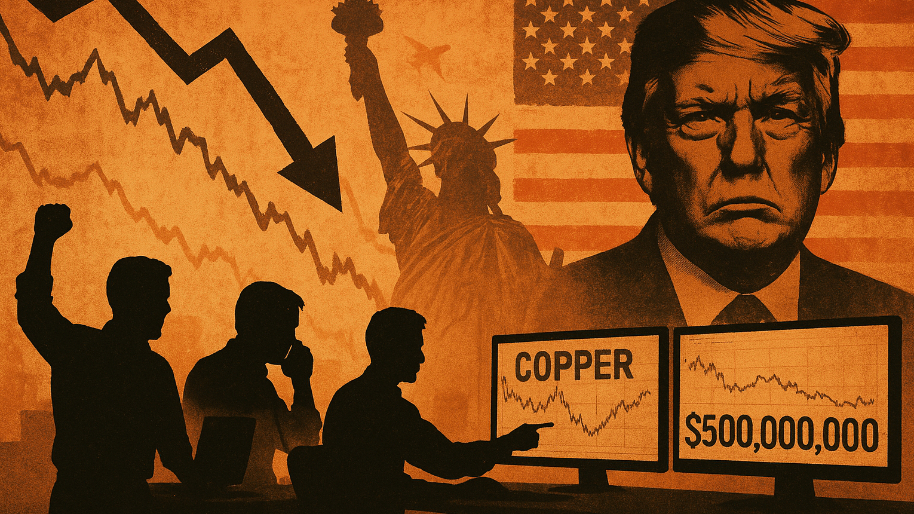Before he was making courtroom sketch artists famous and redefining “house arrest,” Sam Bankman-Fried was actually kind of a genius. At least in a degenerate Wall Street Bets sort of way.
Back in 2017, SBF spotted something called the Kimchi Premium. While it might sound like a Korean lunch special… it was actually a quirk in global Bitcoin pricing. For instance, you could buy Bitcoin for $10K in the U.S., then flip it in South Korea or Japan for $11K–$15K. So Sam did what any math-brained, sleep-deprived 25-year-old would do: he loopholed the crap out of global exchanges, dodged capital controls like a crypto ninja, and pocketed the spread. And what do you know? That little hustle became the foundation of Alameda Research, and later, FTX (aka the world’s most expensive lesson in due diligence).
Hit the fast forward button to the present day, and The same kind of price gap SBF used to bankroll his crypto empire is suddenly back… just not in Bitcoin. This time, it’s playing out in the least sexy corner of finance: copper. (Yes, the stuff in wires. We know. Try to stay awake.)
It all kicked off earlier this year when Trump announced he’d be branding a 50% tariff on copper imports starting August 1. Within minutes of the announcement, U.S. copper prices shot up 13%, and today they’re sitting 28% higher than the global benchmark on the London Metal Exchange (LME). That price gap was pure gold (or copper, I mean) for anyone who knows how to move metal. Commodity giants like Glencore, Mercuria, Trafigura, and IXM were already loading up U.S.-bound ships before the tariffs even got official. Like, hundreds of thousands of tons. Despite how many times he’s cried wolf, they were betting that Trump’s tariff threat wasn’t going to be another Twitter bluff. Spoiler: it wasn’t.
Once the price spread became real, things got even more chaotic. Traders started paying premiums just to cancel orders meant for China and redirect the copper back across the Pacific. Some paid over $800/ton to secure supply, knowing they could still make $1,000+/ton in pure profit if it hit U.S. shores in time. One guy even redirected copper that hadn’t even been unloaded yet. That’s how nuts this got.
Now do the math: 600,000 tons × $520 in average profit per ton equals a nice little $312 million haul. And that’s the conservative estimate. Once you factor in what miners, shippers, and hedge funds pulled in, the total windfall might top $500 million. Not bad for a trade that’s as simple as, “Buy low in one place, sell high in another, and pray the boat gets there in time.”
Then what happens can only be coined as “The Great American Copper Pile-Up of 2025.” Reports say that ports in New Orleans and Panama City are now overflowing. Dockworkers are pulling 12-hour shifts. Copper from Australia, South Korea, and landlocked African mines is showing up in droves (and it won’t stop). Reports say that Mercuria’s even been sending copper through Hawaii just to shave days off the shipping route.
The result is that New Orleans alone now holds more COMEX-approved copper than Shanghai, Rotterdam, Singapore, and Taiwan combined. (Read that again, because that’s a crazy thing to think about). But there’s a catch… Ships take 35–45 days to cross the Pacific. And now, with less than three weeks to go before the tariffs hit, there’s a mad dash to get any remaining copper in before the 50% wall goes up. If you miss it by a day? You could go from $1,000 in profit per ton to a few hundred in losses… fast.
That’s why some traders are already cashing out. While others are rolling the dice that the price spread could widen to $5,000/ton after August 1. And while all this plays out, guess who’s stuck footing the bill? You guessed it… American manufacturers. It’s easy to ignore this part of the story, until you realize copper is the plumbing of the modern economy. We’re not talking about a niche metal here. This stuff runs through power grids, EVs, air conditioners, semiconductors, data centers, and basically everything that makes modern life function. Strip copper out of the system, and you’ve got a nationwide short circuit. So obviously, when copper gets expensive, the ripple effects hit hard. One New Jersey distributor put it this way: “We have to pass the increase to the customers, and we have no idea how they're going to handle it.” (In other words: if your A/C dies this summer, prepare to get fleeced.)
Anyway, in markets this sophisticated, true arbitrage almost never slips through the cracks. With algorithms chewing through microsecond price data and firms spending billions to eliminate even a penny of inefficiency, trades like this are supposed to be extinct. But this time? A few sharp traders saw the writing on the wall. They trusted that Trump’s tariff threat was real, front-ran the policy, and moved before the rest of the world even blinked.
Now they’re cashing in, while U.S. manufacturers are left footing the bill… paying 25–30% more for the exact same copper just because someone else got there first. And look, I know this isn’t your usual stock pick breakdown or a hot take on the next earnings catalyst… but sometimes the biggest market lessons come from watching the pros exploit the rules, not play by them. So take that for what it’s worth.
At the time of publishing this article, Stocks.News doesn’t hold positions in companies mentioned in the article.
Did you find this insightful?
Bad
Just Okay
Amazing
Disclaimer: Information provided is for informational purposes only, not investment advice. We do not recommend buying or selling stocks. Stock price discussions are based on publicly available data. Readers should conduct their own research or consult a financial advisor before investing. Owners of this site have current positions in stocks mentioned thru out the site, Please Read Full Disclaimer for details Here https://app.stocks.news/page/disclaimer
